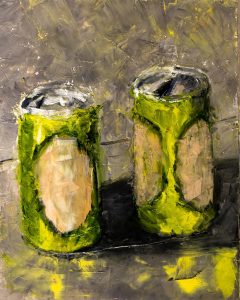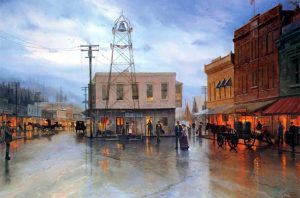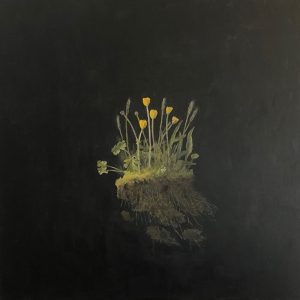22 May Sentimental or Romantic?

The sentimental person thinks things will last;
the romantic person has a desperate confidence they won’t.
—
“High culture is paranoid about sentiment,” the late painter Thomas Kinkade once said. The undisputed “king of kitsch,” he often compared his art to Walt Disney’s. “My paintings beckon you into a world that provides an alternative to your nightly news broadcast,” he told the New York Times. “People are reminded that it’s not all ugliness in the world.”
While loathe to compare myself to Kinkade, I share his view about our need to get away: we all need, from time to time, to escape to a place outside current events, because that’s where serenity lies.

But I understand, as well, that paintings shouldn’t only center on hearth and home. Painters need to shout fire sometimes, to “break the silence of indifference.” That means abandoning pretty subjects and painting things that are ugly and shocking: grotesque images of sorrows, poverty, atrocities, and death.
Artist Peter Swift’s Nine Cubic Inches of Maryland Dirt is a painting of this kind. Its mournful presence means to remind us that technology threatens our species with extinction—not a comforting thought. It’s the dark opposite of a sentimental painting.

Painting the unsentimental goes to the very heart of a the painter’s profession by asking, why bother to paint?
If your goal as a painter is only to create pretty pictures, void of little more than nostalgia, you’re squarely sentimental. The present may suck, you’re saying, but at least we have the past to hold onto. But if your goal is to venture beyond the pretty and depict less saccharine subject-matter, you’re probably a romantic. The present may suck, you’re saying, but we can console ourselves that things can change for the better.
Sentimental painting provides a crutch for crippled spirits.
Romantic painting insists there’s a better way.
Above: Beer Cans by Robert Francis James. Oil on fiberboard. 8 x 10 inches. Placerville, 1916 by Thomas Kinkade. Oil on canvas. 20 x 16 inches. Nine Cubic Inches of Maryland Dirt by Peter Swift. Acrylic on canvas. 48 x 48 inches.
